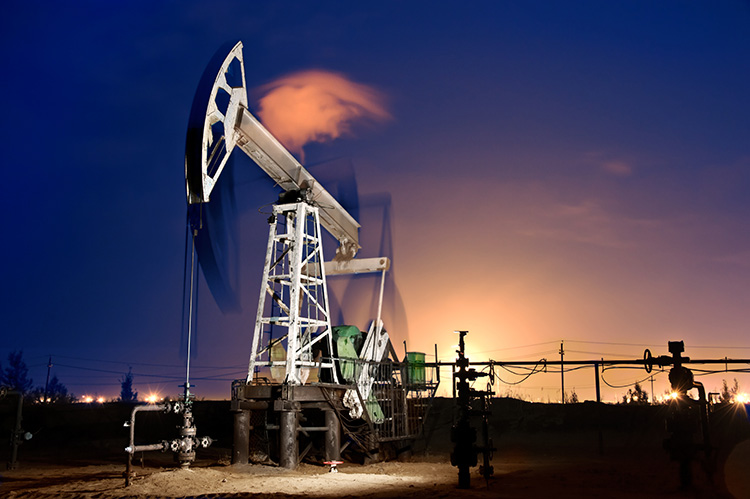Extra heavy crude
Very heavy crude are hydrocarbons with an API grade of about 15 or below.
The most extreme heavy crude currently extracted is Venezuelan 8 API
crude, e.g., in eastern Venezuela (Orinoco basin). If the reservoir
temperature is high enough, the crude will flow from the reservoir. In other
areas, such as Canada, the reservoir temperature is lower and steam
injection must be used to stimulate flow from the formation.
When reaching the surface, the crude must be mixed with diluents (often
LPGs) to allow it to flow in pipelines.
The crude must be upgraded in a
processing plant to make lighter SynCrude with a higher yield of high value
fuels. Typical SynCrude has an API of 26-30. The diluents are recycled by
separating them out and piping them back to the wellhead site. The crude
undergoes several stages of hydrocracking and coking to form lighter
hydrocarbons and remove coke. It is often rich in sulfur (sour crude), which
must be removed.
9.1.2 Tar sands
Tar sands can often be strip-mined. Typically, two tons of tar sand will yield
one barrel of oil. Typical tar sand contains sand grains with a water
envelope, covered by a bitumen film that may contain 70% oil. Various fine
particles can be suspended in the water
and bitumen.
This type of tar sand can be processed
with water extraction. Hot water is added
to the sand, and the resulting slurry is
piped to the extraction plant where it is
agitated and the oil skimmed from the
top. Provided that the water chemistry is
appropriate (the water is adjusted with
chemical additives), it allows bitumen to
separate from sand and clay. The
combination of hot water and agitation
129
releases bitumen from the oil sand, and allows small air bubbles to attach to
the bitumen droplets. The bitumen froth floats to the top of separation
vessels, and is further treated to remove residual water and fine solids. It can
then be transported and processed the same way as extra heavy crude.
It is estimated that around 80% of tar sands are too far below the surface for
current open-cast mining techniques. Techniques are being developed to
extract the oil below the surface. This requires a massive injection of steam
into a deposit, thus liberating the bitumen underground, and channeling it to
extraction points where it can be liquefied before reaching the surface. The
tar sands of Canada (Alberta) and Venezuela are estimated at 250 billion
barrels, equivalent to the total reserves of Saudi Arabia.
9.1.3 Oil shale
Most oil shales are fine-grained sedimentary rocks containing relatively large
amounts of organic matter, from which significant amounts of shale oil and
combustible gas can be extracted by destructive distillation. Significant shale
“plays” have been discovered in the last decade, such as the Marcellus in
the northern US and Canada, Eagle Ford on the US east coast and Bakken
in south Texas.
Oil shale differs from coal in that organic matter in shales has a higher
atomic hydrogen to carbon ratio. Coal also has an organic to inorganic
matter ratio of more than 4, i.
e., 75 to 5, while oil shales have a higher
content of sedimentary rock. Sources estimate the world reserves of oil
shales at more than 2.5 trillion barrels.
Oil shales are thought to form when algae and sediment deposit in lakes,
lagoons and swamps where an anaerobic (oxygen-free) environment
prevents the breakdown of organic matter, thus allowing it to accumulate in
thick layers. These layers were later covered with overlying rock, to be
baked under high temperature and pressure. However, the heat and
pressure were lower than in oil and gas reservoirs.
Shale can be strip-mined and processed with distillation. Extraction with
fracturing and heating is still relatively unproven. Companies are
experimenting with direct electrical heating rather than steam injection.
Extraction cost is currently around $25-30 per barrel.
130
9.1.4 Shale gas and coal bed methane
Oil shales are also becoming an important source of shale gas, and some
analysts expect that this source of natural gas can supply half of the gas
consumption in the US and Canada by 2020. Shales normally do not have
the required matrix permeability for the gas to be produced, and in the past,
gas could be produced only from source rock with significant natural
fracturing. The natural gas comes from decomposition of shale oil and is
held in natural fractures, some in pore spaces, and some adsorbed onto
organic material. Recently, there have been strong advances in extraction
technology, which uses a combination of horizontal wells and hydraulic
fracturing in a way that maintains fracturing (see chapter 3.7) and flow of gas
much better than before. Even so, production typically requires a high
number of wells with limited lifetimes, so continuous drilling of new wells is
required to maintain output. Methane is a potent greenhouse gas, and
emissions from leaking capped wells and fractures is a potential problem
due to the large number of wells.


